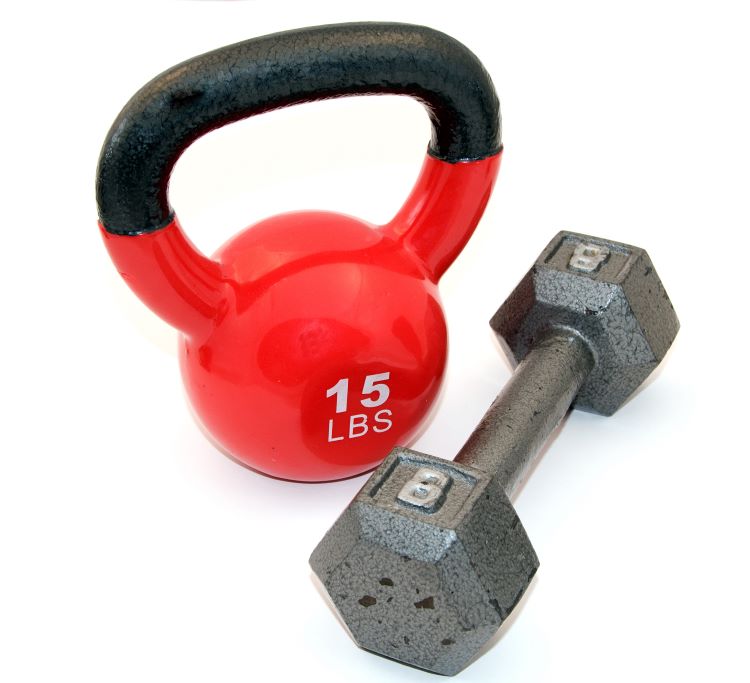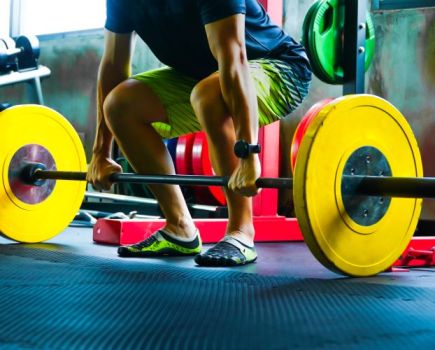Understand the relative merits of kettlebells vs dumbbells for muscle, strength and functional fitness.
When choosing your free weights weapon for single-sided and functional exercises, there are a couple of stand-out options vying for your attention: the best kettlebells and dumbbells.
Historically, the latter would be the obvious pick. They have been a favourite of gym-goers for decades, whether bodybuilders and powerlifters or cardio-focused athletes looking to add some strength and conditioning. But more recently, the kettlebell has started to rival the dumbbell, and in some instances is even shown to be a more suitable design for getting the most bang for your buck.
Kettlebells vs dumbbells: benefits of kettlebells
The cannonball and handle-shaped weights come in a range of pre-set loads, starting at 8.8lb / 4kg and generally topping out at 88lb / 40kg. At the lower end, kettlebells will increase in 4.4lb / 2kg increments, before jumping up by 8.8lb / 4kg each time.
Compact in design, they’re great for kitting out a home gym with and will take up less space than the equivalent dumbbell rack. But their benefits go beyond their stature. Incredibly versatile, the kettlebell can be used for push, pull, hinge, lift and carry movements.
The fundamental kettlebell movement is the kettlebell swing. An exercise that engages your full posterior chain, it recruits just about every muscle in your body while undoing the negative impacts of a sedentary, desk-based job. It’s not just a one-trick pony though, and when used for other movements such as presses and snatches, the method of gripping the kettlebell will ensure that stabilising muscles are also put through their paces, leaving you with better long-term functional control.
Finally, the full-body nature of the best kettlebell exercises means that a workout (particularly a kettlebell HIIT workout) will get your heart rate going, adding a big side of calorie burning to your strength training.
Although applicable to all new weights, if you haven’t used kettlebells before, it will require the learning of new lifting techniques to ensure you’re performing exercises safely and with good form. Anyone new to kettlebells can check out our list of the best kettlebell exercises for beginners.
Kettlebells vs dumbbells: benefits of dumbbells
The typical fixed dumbbell features plates locked in place on either side of a small bar that you grip. Dumbbells come in pre-set loads, ranging from as low as 1.1lb / 0.5kg through to – in most commercial gyms – 110lb / 50kg. Dumbbells can come with circular, square or hex-shaped weights, with the latter best for floor-based exercises like push-ups or renegade rows, as they’re less prone to rolling around.
Like kettlebells, dumbbells can be used for a variety of movements, and they’re arguably the most versatile tool you can have in your exercise armoury. When you want to isolate one muscle group, such as the chest or biceps, they’re perfect, as the load is balanced (unlike kettlebells) and it’s easier to hone in on the muscle in question. Because of that, dumbbells tend to be the better option for complete beginners – there’s simply less to think about.
When it comes to swing exercises, a dumbbell probably isn’t the best design, and you’ll find that you can probably lift heavier weights with a barbell during squats and presses. The only real downside for fixed is the amount of room that they take up, which can become an issue if you’re building up a home gym but have limited space. However, that is where the best adjustable dumbbells come in.
Related content







